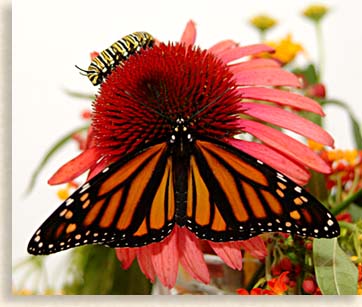Nature’s Pilgrimage
They descend upon the mountains as the law of nature demands. In mass numbers they arrive dedicated and loyal to their own ancestral customs and traditions. Bonded as family, they adhere to their kinsmen calling, displaying their traditional colors and design like the tartans of Scot-Irish clans or the tribal pottery motif of the ancient Native Americans. Their family crest is of a style that sets fear into their natural enemies, an age old shield that provides safe passage for them and their loved ones.
The autumn season begins their celebration of life as they pursue a natural innate spiritual sense that drives them along a pilgrimage that will eventually carry them across a continent. Before their great journey begins they must partake in a fertility ceremony essential to their future survival.
This is not an attempt to unveil to the public the secrets and mysteries of a lost civilization or the recent discovery of a secretive cult. It’s nature’s divinely created “Monarch Butterfly” that has captured the imagination within this Blue Ridge Highlander feature.
The monarch butterfly is probably the most popular butterfly known to us North American residents. The mystery of the monarch has been used as a symbol of evolution, an alteration that has been likened unto the spiritual transformation of mankind. A transition that takes one from the depths of life to the wings of the spirit, coming under the protection of divine order.
Each year the monarch butterfly begins a journey that will take them from the field and forest of the northern North American Continent to the southern reaches of this hemisphere in Central Mexico. The 2,000 to 2500 mile journey to the Sierra Mountains of Mexico to fulfill their personal destiny guaranteeing a fertile and proposed coming year.
North Carolina is on the natural path of migration. Each autumn you can experience the migration of thousands of monarchs throughout the mountains. Two popular sites for viewing are on the Blue Ridge Parkway at Cherry Cove Overlook just south of Mount Pisgah at milepost 415.7 and Doughton Park at Buff Mountain between mileposts 238.5 & 244.7.
Monarch Butterflies have a short life expanse, up to five generation are produced each summer season. The last generation of Monarchs per-season will not reach complete maturity in late summer and as autumn arrives they are driven to migrate south for survival's sake along with most of the other winged friends of the air...the birds.
Their compatible adventure along side their larger feathered friends are due to the Monarch’s natural diet of the milkweed plant. It’s  seems as though an organic compound within the plant acts as a poison to birds making the birds violently ill, birds are know to avoid this species of butterfly when recognizing the monarch’s color patterns.
seems as though an organic compound within the plant acts as a poison to birds making the birds violently ill, birds are know to avoid this species of butterfly when recognizing the monarch’s color patterns.
The mystery of the monarch’s life and evolution has captured the minds of many, yet it’s the natural wonder, beauty and docile nature of these magical creatures that draw us closer to witness their life. We enjoy their grace and beauty dwelling amongst the flower gardens, beautiful un-rooted creatures competing for attention within the garden’s vibrant colors.
Whether it’s within the grandeur of the Blue Ridge - Smoky Mountains or your own backyard, monarch butterflies make great addition to all of our the landscape.
The Highlander
Places to view the Migration of the Monarch
Learn how to create your own "Butterfly Garden.”

